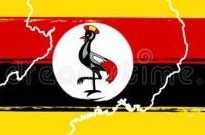
Sand For Sale In Uganda
What is Sand?
Sand is a granular material composed of finely divided mineral particles. Sand has various compositions but is defined by its grain size. Sand grains are smaller than gravel and coarser than silt. Silica is actually silicon dioxide (SiO2), which is a compound that makes up most of the earth’s crust. It also makes up the mineral quartz, and actually has many uses (including making ceramics, concrete and countertops).
What is sand made of In Uganda?
Sand forms when rocks break down from weathering and eroding over thousands and even millions of years. Rocks take time to decompose, especially quartz (silica) and feldspar. Often starting thousands of miles from the ocean, rocks slowly travel down rivers and streams, constantly breaking down along the way.
What do you find in sand In Uganda?
Most beach sand is made up of quartz, “silicon dioxide, natural glass,” explained Leatherman. Rocks in rivers and streams erode slowly over time as they are carried to the ocean, where rolling waves and tides bombard them into even smaller particles. The finer the sand, the older it is.
How many types of sand are there In Uganda?
In the United States, sand is commonly divided into five sub-categories based on size: very fine sand ( 1⁄16 – 1⁄8 mm diameter), fine sand ( 1⁄8 mm – 1⁄4 mm), medium sand ( 1⁄4 mm – 1⁄2 mm), coarse sand ( 1⁄2 mm – 1 mm), and very coarse sand (1 mm – 2 mm).
What are the types of sand In Uganda?
Based on the grain size of the particle, sand is classified as Fine Sand(0.075 to 0.425mm), Medium Sand(0.425 to 2mm), and Coarse Sand(2.0 mm to 4.75mm)
Based on origin, sand is classified as Pit sand, River sand, Sea sand, and manufactured sand.
What is the prices for Sand In Uganda?
Brown Lake Sand for Plaster
USh 175,000
Lwera White Sand
USh 195,000
Yellow Sand With Large Grains Forward Flat
USh 200,000
White Lake Sand/ Lwera
USh 195,000
What are the main sources of sand In Uganda?
There are four common sources of sand: weathering on continental granitic rock, weathering of oceanic volcanic rock, skeletal remains of organisms, and precipitation from water.
What are sand properties In Uganda?
Should be completely inert.
Grains should be sharp, strong & angular.
Should not contain any hygroscopic salts (i.e., CaCl2, MgCl2, etc.).
Should not contain clay & silt; usually 3-4% clay & silt is ordinarily permitted for practical reasons.
There should be no organic matter.
What are uses of sand In Uganda?
Doorstop. Fill a Ziploc bag with sand and wrap it in decorative cloth for a unique doorstop.
Cleaning Bottles.
Garden Tools.
Distressed Wood Furniture.
Jar Lanterns.
Driveway and Garage Stains.
Swing Set Landings.
Minimize Fire Danger.
What are the two elements of sand In Uganda?
Well, much of the world’s sand is made out of the same stuff, tiny crystals of the mineral quartz, which is made out of silica and oxygen, the two most common elements in Earth’s crust.
Which sand is used for construction In Uganda?
Mason sand is one of the most popular types of sand used in construction and landscaping. Mason sand (also called masonry sand or mortar sand) is fine sand often used in construction. This sand features grains of uniform size, giving it a smooth look and feel.
Where can I buy Sand In Uganda?
Building Materials Uganda
Address: Plot 45, Zana, Kampala – Entebbe Rd, Kampala, Uganda
Phone: +256 701 091980
iBM Stone Aggregate Suppliers
Address: Pilkington Road, Colline House, (Uganda – Kampala, Kampala, Uganda
Phone: +256 781 580278
Kalubi Jafari Building & Construction Material Suppliers – Bricks, Sand, Stone, Blocks, Poles
Address: Lorry Trucks Parking Yard, Nakawuka, Uganda
Phone: +256 752 305080
Salinda Building Sand Suppliers
Address: Buwonzi -Ssanga Rd Buwonzi, Uganda
Phone: +256 781 577616
Click Here To Buy Any Sand Of Your Choice In Uganda
